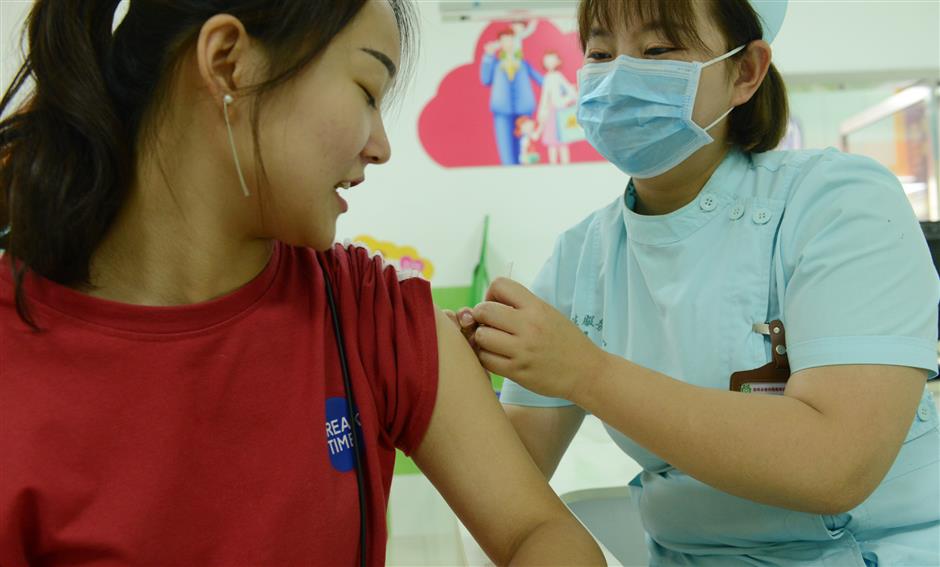Boom in HPV vaccinations shows Chinese women's growing health consciousness

A woman receives HPV vaccine in Zhengzhou, Henan Province, on August 3.
Fan Lei, 32, cannot wait to get her first human papilloma virus (HPV) vaccine, after a fretful three-month wait.
"I asked for leave immediately after the call from the community health service center," she said.
The HPV vaccine Fan received in the city of Yinchuan in northwest China's Ningxia Hui Autonomous Region, was developed by U.S.- based Merck & Co, and approved by the China Food and Drug Administration to enter the market in May. The first batch reached Chinese consumers a month ago.
The introduction of the new vaccine came after a good response from Chinese women to GlaxoSmithKline's Cervarix, the first HPV vaccine licensed for use in China, earlier in the year.
But Cervarix has an age cap of 25, while the Merck product is available for anyone from 20 to 45.
"In fact, I intended to get the Cervarix vaccination, but was told I was too old," Fan told Xinhua.
The younger generation in China, especially middle-class women Fan's age or younger, now have a much greater health consciousness. In just a month, the center Fan visited received more than 910 reservations for the new HPV vaccination, but only 280 vaccines were available, according to Gao Xiaoyan of the center.
The popularity of HPV vaccines in Yinchuan mirrors the strong demand nationwide.
According to the report "Cancer Statistics in China 2015" published by CA: A Cancer Journal for Clinicians, more than 30,000 patients died of cervical cancers, and over 98,900 new cervical cancer cases were reported in China in 2015. In other words, three Chinese women were killed by cervical cancer every hour.
But cervical cancer, by far the most common HPV-related disease, can largely be prevented.
According to the WHO, nearly all cases of cervical cancer, the fourth most frequent cancer in women, can be attributed to HPV. It can take 15 to 20 years for cervical cancer to develop in women with normal immune systems, and the symptoms tend to appear only after the cancer has reached an advanced stage, making it important to take precautions in advance.
The two HPV vaccines currently available on the market can protect against both HPV 16 and 18, which cause at least 70 percent of cervical cancers, according to the WHO. The vaccines may also offer cross-protection against other less common HPV types that cause cervical cancer.
But for some time, HPV vaccines were not greenlit on the Chinese mainland due to safety concerns, and many had to travel to Hong Kong to get a shot.
A complete HPV vaccination requires three shots in six months, which meant patients had to travel to Hong Kong three times during this period, at high cost.
"Some of my friends went to Hong Kong to get the vaccination, but it's too troublesome to go from Yinchuan. Now we have it at home, it's much easier," Fan said.
Though one shot of the vaccine costs over 800 yuan (121 U.S. dollars), Fan and her friends believe it is worth the money.
"It is pricey. But compared with the economic and mental burden of the disease, it is nothing," she said.
China is also developing its own HPV vaccine. Clinical testing of a second-generation HPV vaccine, led by the National Institute of Diagnostics and Vaccine Development in Infectious Diseases, was approved by the China Food and Drug Administration in late November. It is expected to enter the market in 2022.
"HPV vaccination can prevent most types of cervical cancer, but a regular health check is still necessary," said Zhou Liwei, vice chairman of the Center for Disease Prevention and Control in Ningxia.
"Cervical cancer patients are getting younger. We should care more about our health through regular health checkups and proper vaccinations," Fan said.















